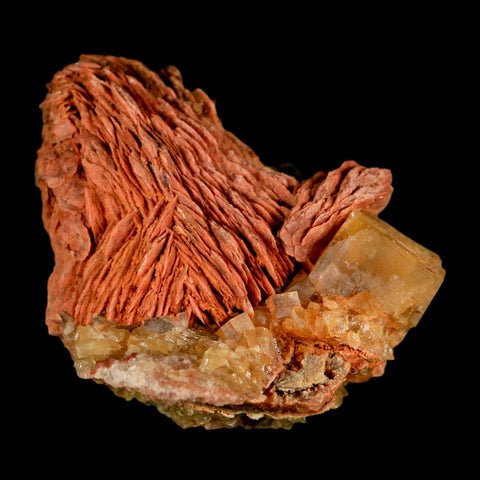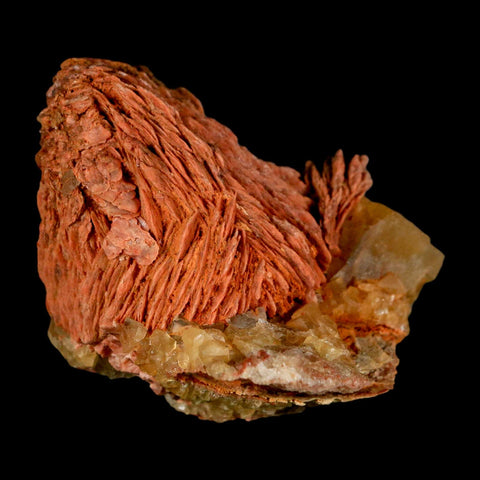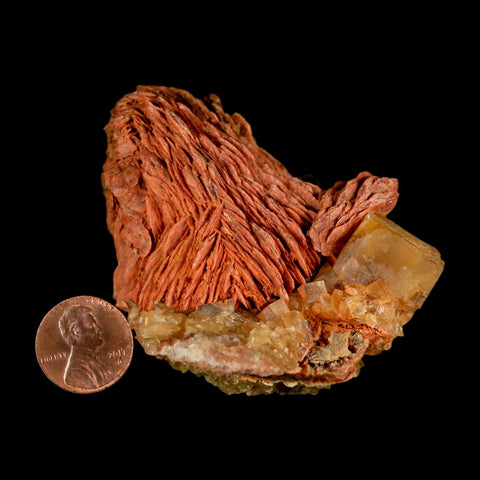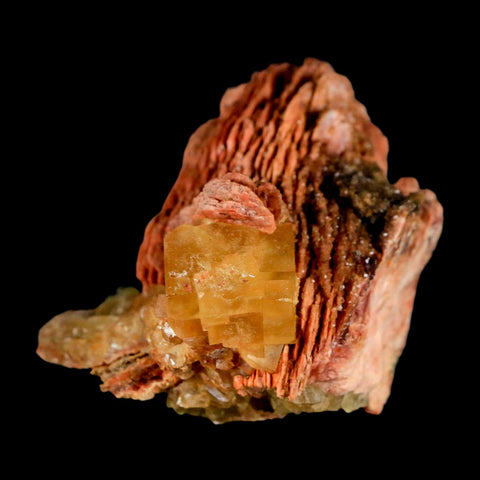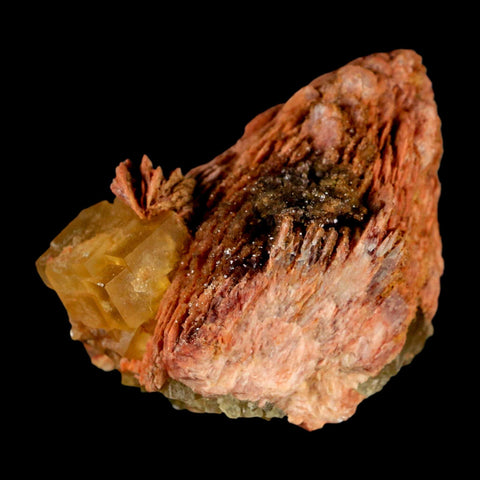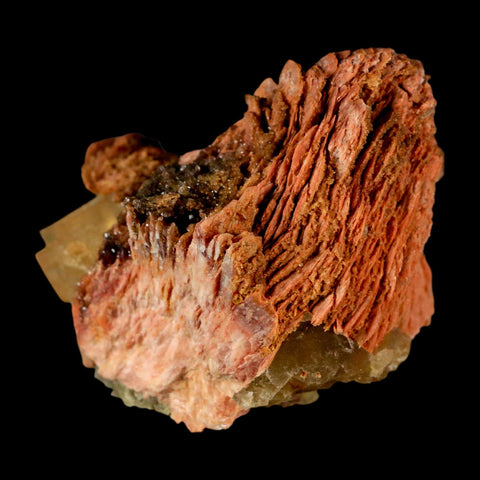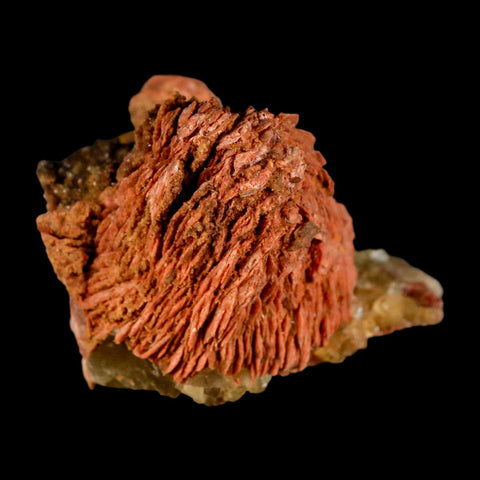2.7" Yellow Fluorite on Orange Barite Blade Crystals Minerals Taouirirt Morocco
Location: Taouirirt, Morocco
Weight: 9 Ounces
Dimension: 2.7 Inches Long, 2.8 Inches Wide, 2.1 Inches Thick
The Item Pictured is the one you will receive.
Fluorite, composed of calcium fluoride (CaF₂), is renowned for its vivid colors, perfect octahedral cleavage, and often cubic crystal form. Morocco is a significant source of high-quality fluorite, highly prized by collectors and valued for industrial applications.
Moroccan fluorite primarily forms through hydrothermal processes related to the country’s complex geological history, which includes tectonic activity, magmatism, and hydrothermal alteration. Key occurrences are associated with Hercynian massifs and Alpine orogenic events, particularly in the Anti-Atlas Mountains, where fluorite is often found alongside lead-zinc-barite mineralization. Fluorine-rich hydrothermal fluids circulated through fractures, precipitating fluorite as they cooled, often influenced by nearby granitic intrusions. Additional deposits occur in the Central Massif and High Atlas Mountains, appearing as vein-type formations in sedimentary rocks, where metasomatism replaces calcite with fluorite. Less commonly, sedimentary fluorite deposits form from fluorine-rich brines in evaporitic environments.
Moroccan fluorite is celebrated for its exceptional crystal clarity, diverse forms, and wide color range, including deep purple, blue, green, yellow, pink, and colorless, influenced by trace elements and structural defects. Crystals typically exhibit cubic habits with truncations or bevels, sometimes displaying octahedral twins or color zoning, which reflects changing growth conditions. Its high transparency and vitreous luster enhance its appeal, while perfect octahedral cleavage is often visible. Many specimens also fluoresce under UV light, typically glowing blue or purple due to rare earth elements like europium, underscoring fluorite’s unique optical properties and making Moroccan fluorite highly prized in mineral collections.
Barite, a mineral composed of barium sulfate (BaSO₄), is found in diverse geological settings across Morocco, making the country an important global producer of this industrial mineral. Barite commonly occurs in hydrothermal veins, sedimentary deposits, and as a gangue mineral in lead-zinc ore bodies.
Moroccan barite deposits are concentrated in several regions, with the Anti-Atlas Mountains—particularly Jbel Ouichane and Bou Azzer—being notable for significant occurrences. These deposits are often associated with other metallic minerals. Most Moroccan barite forms through hydrothermal processes, where hot, mineral-rich fluids circulate through fractures and faults, depositing barite as they cool and react with surrounding rock. Sedimentary barite deposits, though less common, are typically linked to marine evaporite sequences.
The high density of Moroccan barite makes it ideal as a weighting agent in drilling muds for oil and gas exploration, which remains its primary global application. Additionally, barite is used as a filler in paints, plastics, and rubber, as a white pigment, and in medical X-ray imaging, leveraging barium's opacity to radiation. The quality, accessibility, and diversity of Moroccan barite deposits make them a significant contributor to the international mineral market.


